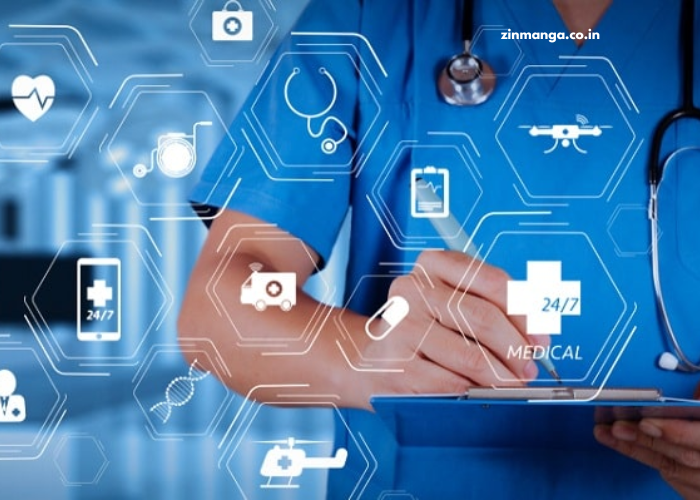The healthcare industry is undergoing a profound transformation, driven by advancements in technology. These innovations not only promise to improve the efficiency and accessibility of healthcare but also have the potential to revolutionize patient care, making it more personalized, accurate, and effective. As we continue to explore new healthcare technologies, it is crucial to understand their impact on the medical field, how they benefit both healthcare professionals and patients, and the future possibilities they hold. In this article, we will delve into some of the most promising healthcare technologies that are shaping the future of care.
The Role of Technology in Healthcare
Revolutionizing Patient Care Through Innovation
Technology has always played a key role in healthcare, but the recent surge in innovation is unprecedented. From diagnostic tools to treatment methods, the integration of advanced technologies is enhancing the precision, accessibility, and overall quality of care. The healthcare sector, traditionally slow in adopting new technologies, is now embracing digital transformation at an accelerated pace.
The key drivers of this change include the rise of artificial intelligence (AI), telemedicine, wearable devices, and robotic surgeries, all of which are improving patient outcomes while optimizing healthcare systems. Let’s explore these groundbreaking technologies in more detail.
AI and Machine Learning: Enhancing Diagnosis and Treatment
Artificial Intelligence in Healthcare
Artificial Intelligence (AI) and machine learning (ML) are rapidly transforming the healthcare landscape. AI refers to computer systems that can mimic human intelligence to perform tasks such as diagnosing diseases, analyzing medical data, and assisting in decision-making processes. Machine learning, a subset of AI, enables systems to learn from vast amounts of data, improving their accuracy and performance over time.
One of the primary benefits of AI in healthcare is its ability to analyze complex medical data quickly and accurately. AI algorithms can sift through massive volumes of patient data, including medical histories, lab results, and imaging scans, to identify patterns that may otherwise be overlooked. This ability to detect early signs of diseases such as cancer, heart disease, and neurological conditions can significantly improve patient outcomes by enabling early intervention.
AI-powered diagnostic tools are already being used to detect conditions such as skin cancer, diabetic retinopathy, and lung diseases, with some systems achieving accuracy levels on par with or even exceeding human experts. Moreover, AI-driven clinical decision support systems help healthcare professionals by providing evidence-based recommendations, ensuring the best possible treatment plan for each patient.
Personalized Medicine Through AI
Another exciting application of AI in healthcare is personalized medicine. By analyzing genetic information, lifestyle factors, and medical histories, AI systems can help create individualized treatment plans for patients. This approach leads to more effective treatments with fewer side effects, improving both patient satisfaction and long-term health outcomes.
Telemedicine: Revolutionizing Access to Care
The Rise of Telemedicine
Telemedicine, the practice of delivering healthcare services remotely via video calls, phone consultations, or online platforms, has gained significant traction in recent years. While telemedicine was once seen as a supplementary service, it has become a cornerstone of modern healthcare, especially since the COVID-19 pandemic. As a result, telehealth technologies have expanded rapidly, offering patients access to medical professionals without the need for in-person visits.
Telemedicine is particularly beneficial for patients in rural or underserved areas who may have limited access to healthcare facilities. It allows individuals to consult with doctors and specialists from the comfort of their homes, saving time and reducing the burden of traveling long distances for medical care. Additionally, telemedicine ensures continuity of care, allowing patients to follow up on treatments, receive mental health support, or discuss test results remotely.
Benefits of Telemedicine for Healthcare Providers
For healthcare providers, telemedicine enhances operational efficiency. Doctors can conduct consultations back-to-back without the constraints of room availability or physical appointments, enabling them to see more patients in a shorter amount of time. Furthermore, telemedicine reduces the risk of exposure to contagious diseases, as patients can receive care without visiting crowded healthcare facilities.
Telemedicine platforms also integrate seamlessly with electronic health records (EHRs), allowing healthcare providers to access patients’ medical histories, track treatments, and prescribe medications remotely. This improves the accuracy of diagnoses and helps ensure that patients receive the right care at the right time.
Wearable Health Devices: Empowering Patients
The Role of Wearables in Monitoring Health
Wearable technology is transforming how individuals manage their health. Devices such as smartwatches, fitness trackers, and medical-grade wearables enable patients to monitor their vital signs and track various health parameters, including heart rate, blood pressure, sleep patterns, and physical activity levels. These devices provide real-time data, offering both patients and healthcare professionals valuable insights into the patient’s health status.
One of the most significant advancements in wearable health technology is the ability to detect early signs of health issues. For example, smartwatches that monitor heart rate variability can alert users to irregularities that may indicate heart problems. Similarly, wearable glucose monitors help individuals with diabetes track their blood sugar levels continuously, leading to better management of the condition.
Remote Monitoring and Chronic Disease Management
Wearable devices are particularly useful in the management of chronic diseases. Remote monitoring allows healthcare providers to keep track of patients’ conditions outside of clinical settings, ensuring better management of chronic diseases such as diabetes, hypertension, and asthma. Continuous monitoring can help detect complications early and prevent hospitalizations, improving the overall quality of life for patients.
The data generated by wearable devices can also be shared with healthcare providers in real-time, allowing them to adjust treatment plans and offer timely interventions when necessary. This level of personalized care is possible because wearable devices create an ongoing feedback loop between patients and providers, helping to prevent adverse health events before they occur.
Robotic Surgery: Precision and Minimally Invasive Procedures
The Rise of Robotic-Assisted Surgeries
Robotic surgery is an innovative technology that enables surgeons to perform complex procedures with greater precision and control. These advanced robotic systems, such as the da Vinci Surgical System, use robotic arms that are controlled by a surgeon through a console, offering enhanced dexterity, better visualization, and more accurate movements during surgery.
Robotic surgery is particularly beneficial for minimally invasive procedures. Surgeons can make smaller incisions, reducing patient trauma, minimizing the risk of infection, and shortening recovery times. This results in less pain for the patient and quicker return to normal activities.
Benefits of Robotic Surgery for Patients and Surgeons
For patients, robotic surgery offers a faster recovery time and reduced hospital stay compared to traditional surgery. It also reduces the risk of complications such as bleeding and infections, as the precision of the robotic system allows for less tissue damage during the procedure.
For surgeons, robotic surgery provides enhanced visualization through 3D imaging and high-definition cameras, allowing for greater accuracy in difficult-to-reach areas. Additionally, the robotic system’s precise movements reduce the likelihood of human error, leading to better surgical outcomes.
Blockchain Technology: Securing Patient Data
The Promise of Blockchain in Healthcare
Blockchain technology, often associated with cryptocurrencies like Bitcoin, is finding its way into healthcare as a tool to secure patient data and improve transparency. Blockchain is essentially a decentralized digital ledger that records transactions across multiple computers in a way that ensures data cannot be altered or tampered with. This characteristic makes blockchain an ideal solution for managing sensitive healthcare information.
Patient data, including medical histories, test results, and prescription records, are often stored across various healthcare providers, making it vulnerable to cyber-attacks, data breaches, and fraud. Blockchain can address these issues by providing a secure and transparent way to share and store medical records, ensuring that only authorized individuals have access to the information.
Enhancing Healthcare Collaboration with Blockchain
Blockchain also facilitates better collaboration between healthcare providers. By providing a secure and efficient way to share patient information, it eliminates the need for redundant tests and reduces administrative burdens. Moreover, blockchain can streamline billing and payment processes, reducing fraud and ensuring that healthcare transactions are accurate and efficient.
Future of Healthcare Technology
Emerging Innovations on the Horizon
The future of healthcare technology is promising, with numerous innovations on the horizon that could further transform patient care. Some of the most exciting possibilities include:
- Gene Editing and CRISPR: Advances in gene editing technology, such as CRISPR, have the potential to cure genetic disorders by directly modifying DNA. This could lead to groundbreaking treatments for conditions such as cystic fibrosis, sickle cell anemia, and certain types of cancer.
- Augmented Reality (AR) and Virtual Reality (VR): AR and VR technologies are increasingly being used in medical training, allowing surgeons to practice complex procedures in a risk-free virtual environment. These technologies could also assist in patient treatment by providing immersive experiences for pain management or rehabilitation.
- Nanotechnology: Nanotechnology could revolutionize drug delivery systems, allowing for the targeted delivery of medications at the molecular level, minimizing side effects and improving treatment outcomes.
The Challenges and Ethical Considerations
Despite the incredible potential of new healthcare technologies, there are challenges that need to be addressed. These include data privacy concerns, the high cost of implementing new technologies, and the need for regulatory frameworks to ensure patient safety. Additionally, as healthcare technologies become more sophisticated, ethical considerations surrounding their use—such as patient consent and the potential for unequal access—must be carefully managed.
Conclusion
In conclusion, the continuous evolution of healthcare technologies is driving significant improvements in patient care, making healthcare more efficient, personalized, and accessible. Technologies such as AI, telemedicine, wearables, robotic surgery, and blockchain are already reshaping the way we approach medical care, while emerging innovations promise to take healthcare to new heights. As we move forward, it is crucial that healthcare providers, policymakers, and patients work together to navigate the challenges and harness the full potential of these groundbreaking technologies, ultimately ensuring better care for all.




